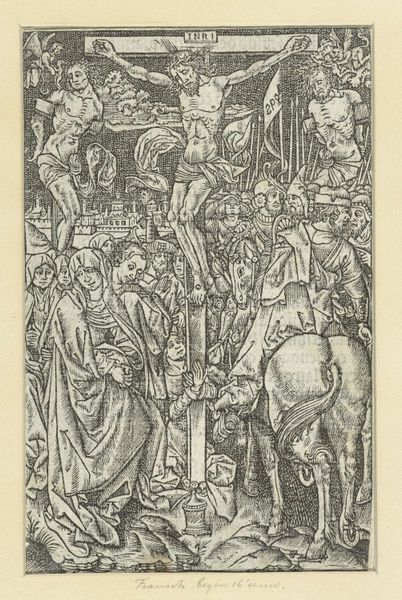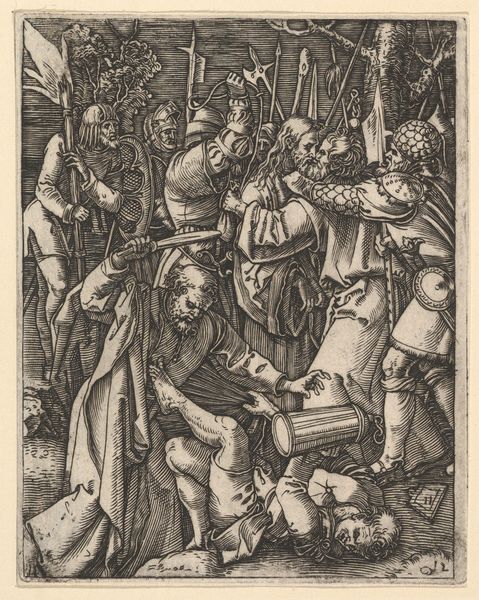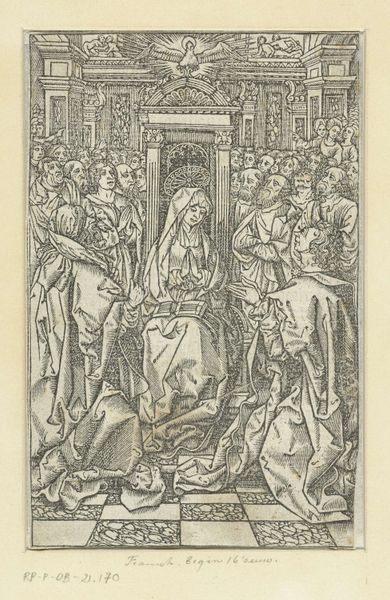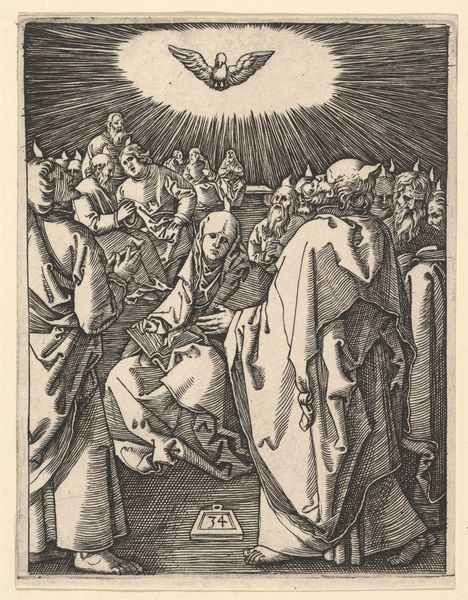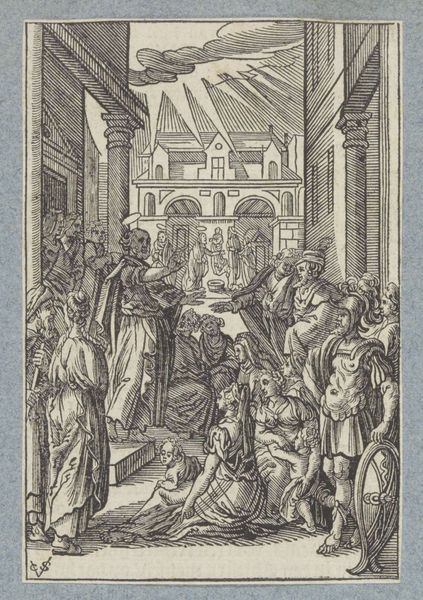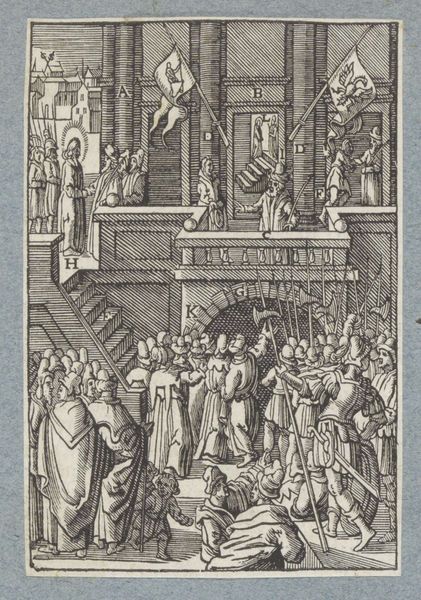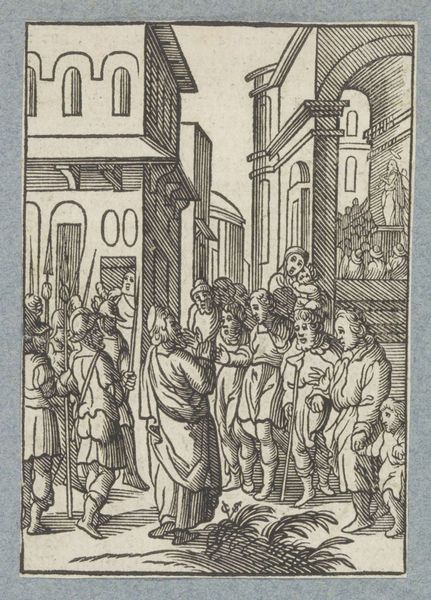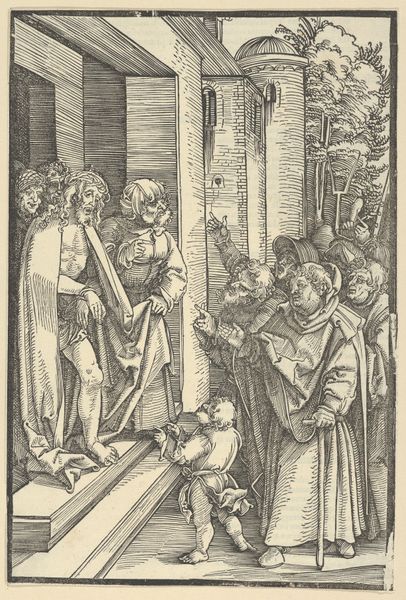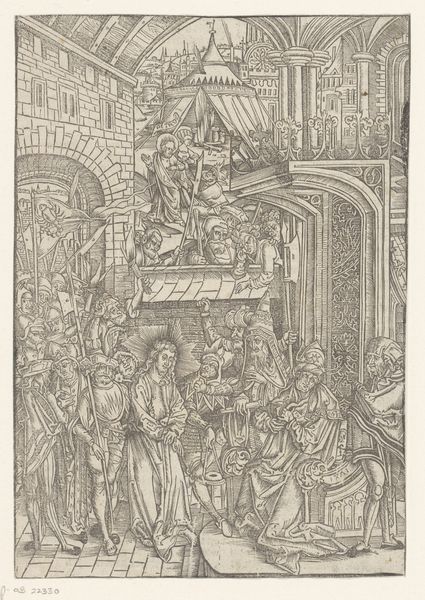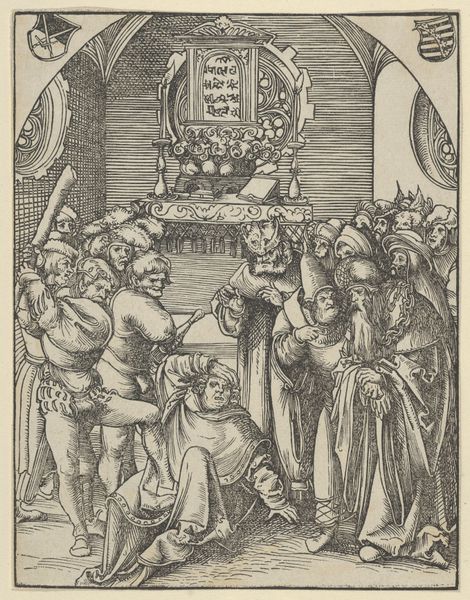
print, woodcut
#
narrative-art
# print
#
landscape
#
figuration
#
woodcut
#
northern-renaissance
Dimensions: height 123 mm, width 80 mm
Copyright: Rijks Museum: Open Domain
Curator: Let's consider this woodcut, dating back to 1507-1508, entitled *The Raising of Lazarus*. It presents a classic biblical narrative within, perhaps, an unexpected visual frame. Editor: My initial reaction is one of profound awe at the density of detail. Look at how the artist uses such simple lines to convey depth, texture, and emotion across such a wide crowd of faces. The formal geometry of the architecture plays beautifully against the organic lines of the figures. Curator: Absolutely. The figuration here becomes key to understanding the religious and social undertones, especially when viewed through the lens of class and power. We see Lazarus centrally framed as a figure of potential social disruption— resurrected from the margins to confront the existing hierarchies. Editor: I appreciate that viewpoint, but my focus remains on the masterful orchestration of the composition itself. Consider the way the artist plays with light and shadow despite the inherent limitations of the woodcut medium. There's a stark contrast that divides the composition almost symmetrically, adding tension. Curator: The landscape isn't merely a backdrop, but rather an active participant in the narrative. Its monumental scale symbolizes the unwavering influence of the church. Lazarus’s emergence challenges the existing order that held individuals captive within rigid social expectations, don’t you agree? Editor: I’m not so certain it symbolizes any sociopolitical movement. The setting contributes to a dynamic stage for this miraculous display; the carefully carved details generate atmosphere, highlighting the central subject's significance. Observe how his face alone carries an element of surprise? Curator: I am also drawn to the fact Lazarus and his visible suffering—a representation, perhaps, of societal vulnerability— invites compassion. Yet the faces behind him represent power structures, their expressions convey varying degrees of belief or skepticism that can still speak to the diversity of today’s belief systems. Editor: Well, either way, I am thoroughly impressed by this piece. Its complexity showcases an artistic skill capable of generating a deeply nuanced narrative that balances graphic representation with thematic richness. Curator: Precisely, viewing the work this way prompts us to recognize how our cultural perceptions and experiences impact our personal interpretation of history.
Comments
No comments
Be the first to comment and join the conversation on the ultimate creative platform.
